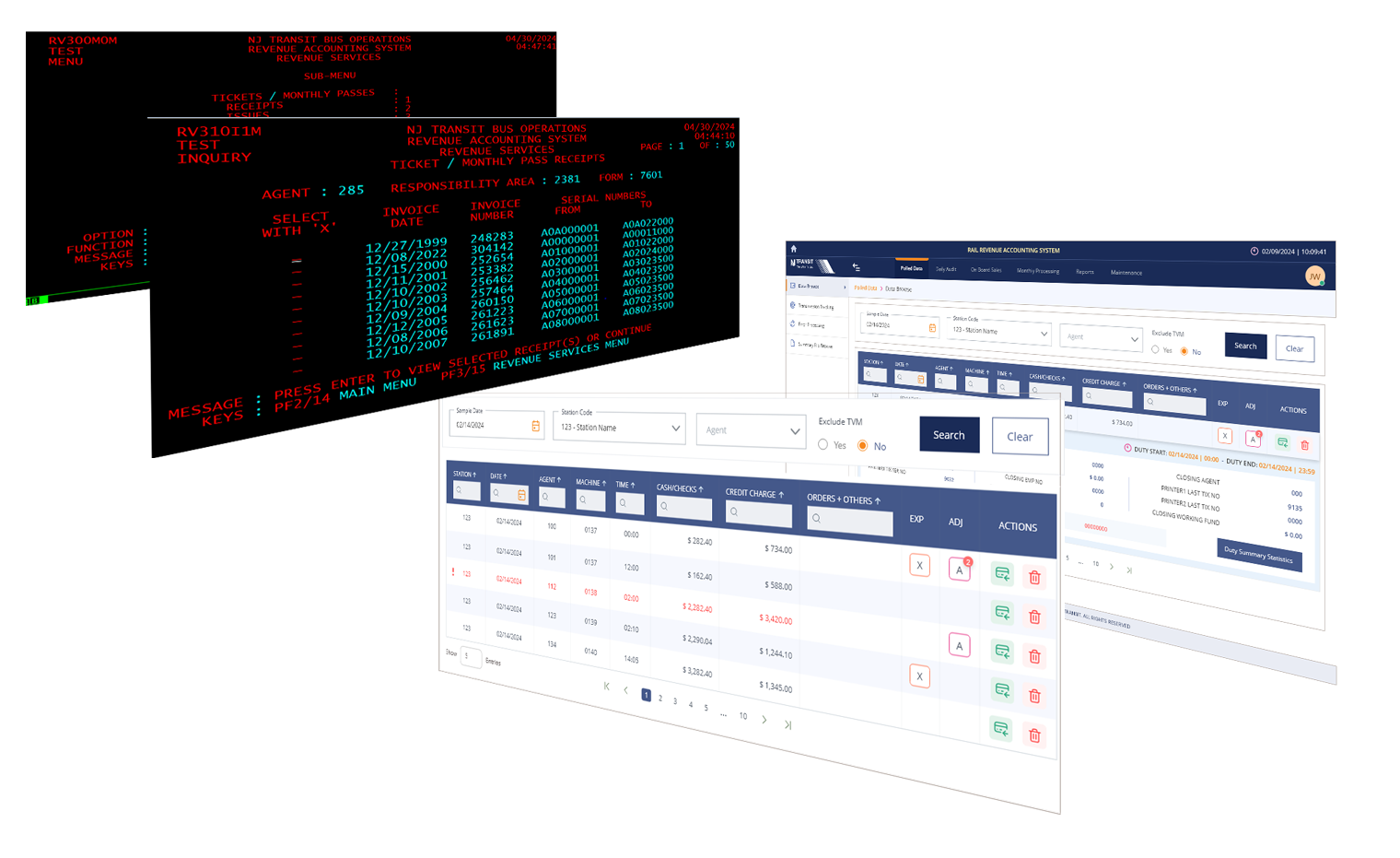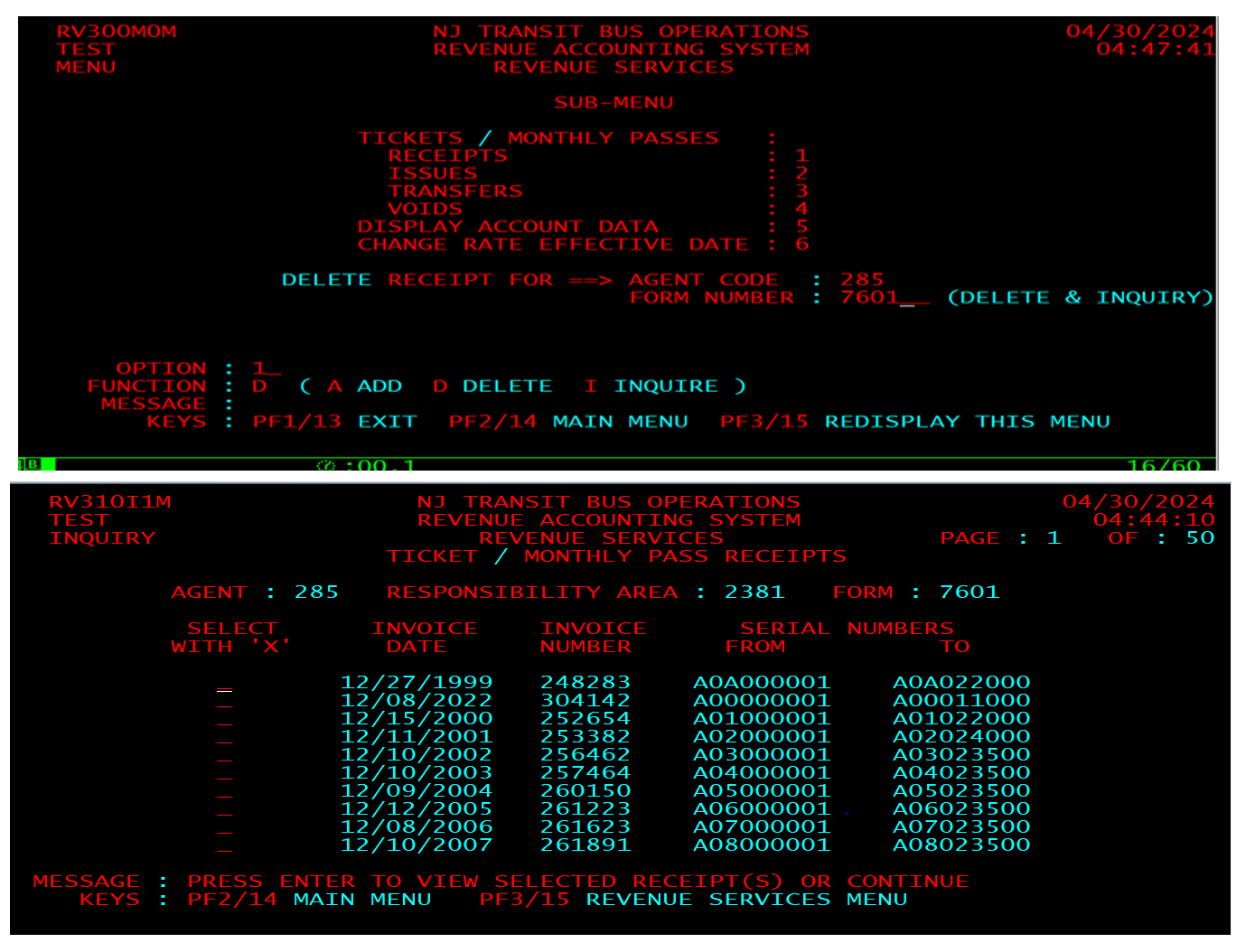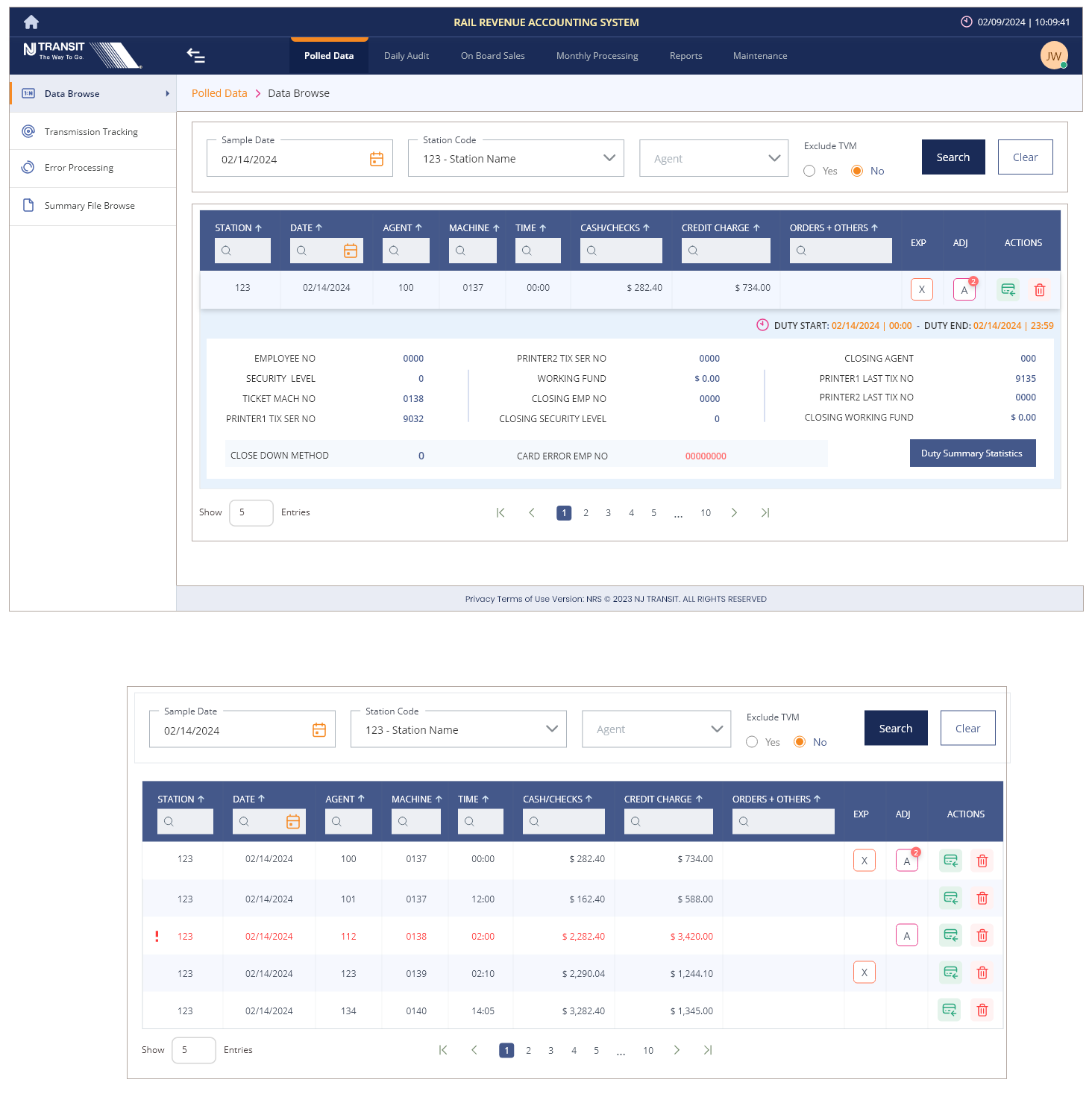Revenue Modernization System- New Jersey Transportation

Overview: The Revenue Modernization System project aimed to enhance the functional and user experience aspects of the existing design developed in COBOL Mainframe to digitally Transform and Modernize digital automation to meet with the latest standards and design experiences. This involved redesigning the complete taxonomy, conducting heuristic evaluations, employing design thinking methodologies, and gathering insights through user interviews to understand their pain points. The objective was to improve the system by recommending new features, defining feature priorities, and reducing clicks to result in a more intuitive and visually appealing fluid design.
Design Prerequisites: The existing system suffered from outdated design elements, complex taxonomy, and a cumbersome user interface. Users encountered difficulties navigating through the system, resulting in inefficiencies and frustration.
The Thought Process: Throughout the project, the team focused on understanding user needs, simplifying complex processes, and creating a more user-friendly experience. Decisions were made iteratively, considering both functional requirements and user feedback.
Design Process: 1. Taxonomy Redesign: - Simplified and restructured the taxonomy for easier navigation. 2. Feature Recommendations: - Identified new features based on user needs and industry standards. - Defined feature priorities to guide development efforts. 3. User Interface Enhancement: - Reduced the number of clicks required to perform common tasks. - Implemented a visually appealing and intuitive fluid design. The redesigned Revenue Modernization System featured improved usability, streamlined workflows, and a modernized interface.
Team Size: 10: The project team consisted of UX designers, developers, stakeholders from the New Jersey Transportation department, and end-users.
Tools Used: -
- Research: - Surveys, Polls, Interviews, Heuristic evaluation techniques
- Design: - Adobe XD and Figma for wireframing and prototyping
- Figma for defining user flows and journey maps -
- Collaboration: Teams, Slack for communication - Jira for project management
Outcome: The redesigned Revenue Modernization System successfully met the objectives of improving functionality and user experience. It now serves as a model for modernizing legacy systems, showcasing the benefits of user-centered design and iterative development processes.
Before and After Screens below.

Redesigned after an extensive requirement evaluations and Research as shown below
